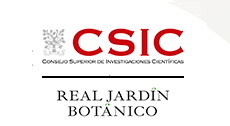Scientific Area
Abstract Detail
Nº613/1995 - Unveiling the extinction risk of Brazilian trees
Format: ORAL
Authors
Eduardo Fernandez1,2,3, Eduardo Amorim 2,3, Fernanda Wimmer 2,3, Glucia Crispim 2,3, Lucas Arguello 2,3, Lucas Jordo 2,3, Marcio Verdi 1,2,3, Mario Gomes 2,3, Monira Bicalho 2,3, Fernanda Fraga 2,3, Camila Nardy Delgado 2,3; Carlos Ferreira 2,3; Vicente Calfo2,3, Gustavo Martinelli1,2,3
Affiliations
1 Rio de Janeiro Botanic Garden Research Institute, Rio de Janeiro, Brazil
2 Brazilian National Centre for Plant Conservation, Rio de Janeiro Botanic Garden Research Institute, Rio de Janeiro, Brazil
3 IUCN Species Survival Commission Brazil Plant Stand-Alone Red List Authority, Rio de Janeiro, Brazil
Abstract
Brazil is the epitome of plant diversity and champion the global ranking of tree species richness. However, this astonishing diversity confronts a looming crisis as human-induced activities intensify. Rampant habitat conversion for agriculture and cattle ranching, coupled with extensive overexploitation, imperils Brazils tree flora. With great responsibility to protect its irreplaceable natural heritage, Brazil has recognized that assessing species extinction risk is a vital step in setting up effective conservation strategies. The Brazilian National Centre for Plant Conservation (CNCFlora), from Rio de Janeiro Botanic Garden Research Institute (JBRJ), is designated nationally and internationally as the Brazils plants Red List Authority and adopts the standards and procedures recommended by IUCN for at-risk species detection. Driven by initiatives tailored to deliver conservation assessments of trees, such as the Global Tree Assessment (GTA) from Botanic Gardens Conservation International (BGCI), CNCFlora/JBRJ has conducted full IUCN conservation assessments of over 3,851 Brazilian trees between 2015-2023. Our results show that 37% (1,276) of the assessed tree species are Threatened (187 as CR, 794 as EN and 295 as VU). NT and LC categories were assigned to 1,943 species, while 633 species were deemed as DD. Brazil has thousands of threatened endemic trees, and while advances in detect at-risk plants increased in recent years, only two native tree species have species-specific national Conservation Action Plans in-place. Most threatened trees in Brazil are found within two global biodiversity hotspots (Mata Atlntica and Cerrado), and in the Amazon, where selective logging is pressing timber species towards extinction. A comprehensive evaluation of Brazils entire tree diversity is imperative to strategically guide interventions and prevent irreversible losses, emphasizing the immediate need to extend conservation measures to safeguard endemic trees for the enduring preservation of Brazils tree biodiversity.




